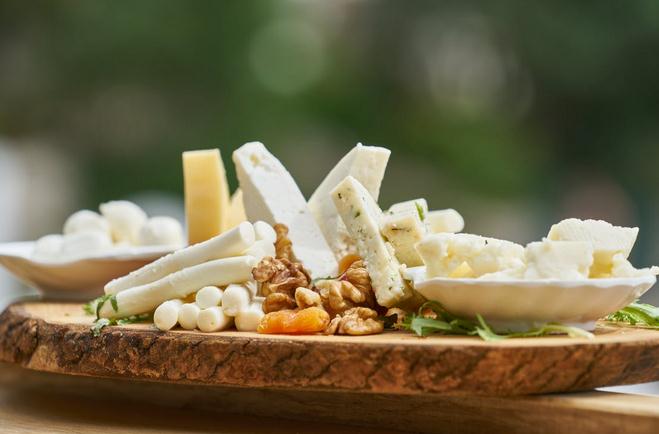India, a country in South Asia, is known for its rich culture. One of the famous itineraries here is the stunning Mumbai street. But did you know that this country has a lot more to say? It has more to offer that we haven’t discovered yet.
Kalyan Sekhar Chakraborty, a researcher at the University of Toronto Mississauga, conduct a study about the earliest evidence of cheese-making in South Asia. The basis is examined from the residues of fatty acids from plants and animals— retained from the vessels at some archeological sites. Yet, previous studies have shown that cheese is not initially originated from India. Food historian KT Achaya speculates that it was the Portuguese, who came to India in the 16th century, brought the culture of cottage cheese by splitting milk with an acidic substance.
Paneer, one of the earliest Indian cheeses, is a combination of both buffalo and cow’s milk. Its process is by curdling hot milk using lime or lemon juice, vinegar, yogurt, or citric acid. The result can be compared to tofu due to its fluffy but firm texture. Paneer is versatile too in dishes like Saag Paneer, Paneer tikka, Paneer pakora, Matar paneer, and such.
Through the years, cheese in India has grown. It does not just entail in Paneer but has created variations too. With that, here are some of the country’s well-known cheese that is now making its name in public.
Kalari
It is basically made from ripened cheese from cow’s or goat’s milk. Frequently, it is being described as Mozzarella. Its flavor is mild and stretchy texture. In Jammu and Kashmir, it is typically sold in the streets. The preparation of this cheese is to flatten and sautée it. Eventually, its fat will develop a crisp golden texture while the inside is creamy, tender, and gooey. Also, because it is in India, Kalari is flavored chiefly with different spices with chopped vegetables on top.
Kalimpong
The name Kalimpong was determined from the eponym city in West Bengal. The pioneer of this cheese is being credited to Brother Abraham, a parish priest in Sikkim. A Kalimpong that is not yet fully matured has a semi-smooth edible rind, slightly acidic flavor, and a crumbly texture. It is best to serve in salads or sandwiches with tomatoes and eggs. Meanwhile, ripened Kalimpong is frequently compared to Gouda. If you have seen a picnic platter, you might have an idea of this cheese because it is usually paired with grapes and biscuits.
Chhena
This is a variant of Paneer and is popular too in West Bengal. It is mainly made by heating milk and curdling it a lemon juice. Also, this has to be drained slowly to achieve a crumbly texture. Chhena is also present in the popular Indian sweet rasgulla, sandesh, rasmala, and cham cham. If you want to consume it without minding other ingredients, just spread the chhena cheese on toast and enjoy it anytime.
Bandel
Bandel originated from West Bengal too. It is a semi-soft cheese made from cow’s milk and has a crumbly texture, a strong aroma, a smoky and salty flavor. Bandel cheese goes well with salad and pasta dishes. The preparation of it is determined from the arrival of the Portuguese people. So first, separate the whey and curds with lemon. After a while, the curd shall mold then be drained. Put in some salt, but it is optional to smoke it. Today, it is prepared in the villages of Bishnupur and Tarakeshwar in Kolkata.
Chhurpi
It is commonly processed in the regions of Nepal, Tibet, and India. Chhurpi is a yak milk-based cheese that is known for its high-protein and nutritional significance. The process is to boil the milk first. The accumulated solid mass will be wrapped in cloth. The water residue should drain, then be cut into strips, smoke, and dried. Chhurpi is initially hard, but the softer one is frequently used as a filling for momos and sometimes mixed in chutneys.
Khoa
It is made from either cow’s or buffalo’s milk. To prepare it, boil the milk in a pan and wait until it becomes condensed. Its result should turn into a slightly green and grainy texture. Khoa is typically used in various Indian savory dishes or sweets such as pedha, barfi, and gujia. Mostly, it is being served during winter and preserved until summer.

